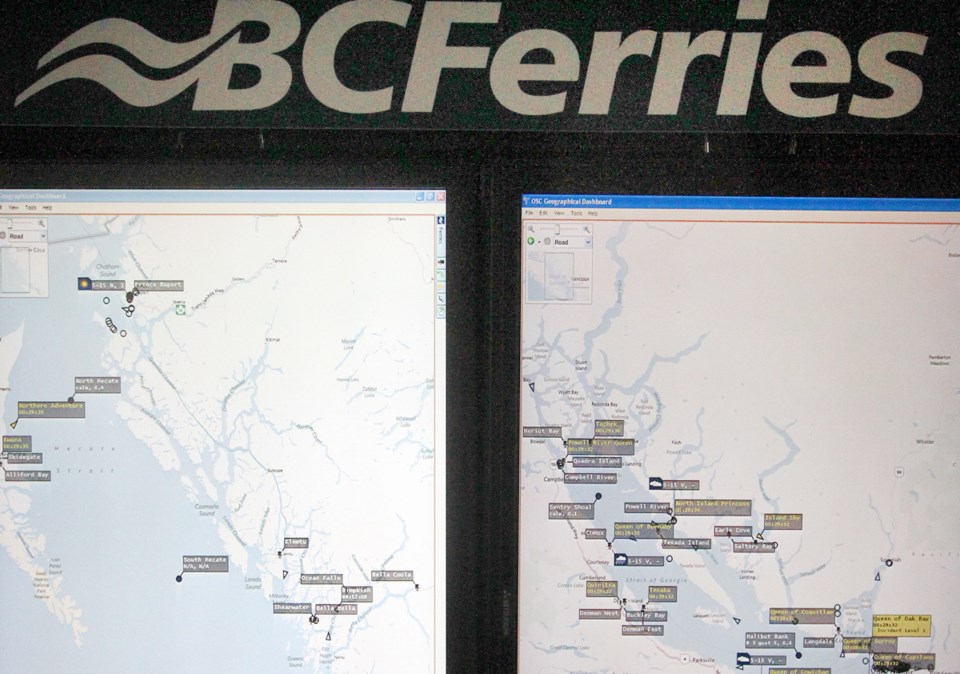B.C. Ferries is in an “affordability death spiral” in which rising fares drive down ridership and revenue, representatives of coastal communities say. They want the provincial government to fund a pilot project to see if lowering fares will increase traffic, breathing life into their economies.
In related news, Miss America wants world peace.
In other words, nice idea but don’t hold your breath waiting for government to change course.
The proposal is in a paper, titled Coastal Ferries: An Unnecessary Crisis, that the Ferries Advisory Committee chairs have presented as part of the government’s budget-consultation process.
The wonderfully acronymed FACC (it pretty much describes how they feel) represents 13 advisory committees in the communities served by B.C. Ferries’ 22 minor, northern and Sunshine Coast routes. The group has contended for years that the province’s push toward a user-pay model is self-defeating.
“This is an affordability death spiral,” the submission states. “It is the core problem facing coastal ferry service.”
The paper argues that instead of increasing revenue, fare hikes are choking off ridership. It predicts that means Ferries will miss budget targets by at least $20.5 million during its current four-year contract with the government.
FACC wants the province to fund a pilot project to see if lowering fares brings more business. “It would be to stop the decline in ferry traffic, and to start restoring the health of coastal communities. We believe the project will demonstrate conclusively that a return to affordable fares will raise traffic to the levels needed to assure sustainability of both B.C. Ferries and our communities.”
It offers three options:
• Freezing fares on the minor, northern and Sunshine Coast routes at 2014 levels for 2015 and 2016
• Rolling back fares by 25 per cent in 2015, then increasing them two per cent.
• Cutting fares by 13.4 per cent in each of 2015 and 2016.
While Ferries has said its drop in ridership has mirrored that of similar ferry services around the world since the economic downturn of 2008, FACC says the decline on the minor routes actually began three years earlier, coinciding with double-digit fare increases.
And while the downturn on the major routes matched that of the economy, it also coincided with steep price jumps. “Fare growth as an inhibitor of traffic would explain why traffic has not recovered from the economic crisis.”
The group compares B.C. Ferries’ experience with that of transportation sectors where the province has been more generous. Vancouver-Vancouver Island fares rose from $44.50 for a car and driver in 2007 to $66 in 2012, and traffic fell seven per cent.
Yet traffic on the Coquihalla Highway, where the $10 toll was eliminated in 2008, rose 44 per cent in the same five-year period. Similarly, a big increase in B.C. Transit funding in the past decade was accompanied by a 32 per cent rise in ridership.
The paper also said that the current drive to reduce operating expenses will have no impact on the corporation’s biggest challenge, the cost of building new ships. In other jurisdictions with “lifeline” ferry services — Scotland, Washington state, Alaska, Newfoundland — governments not only subsidize operating budgets but assume the capital costs. Not so in B.C., where the province’s contribution is relatively small, meaning new vessels must be financed at the fare box.
FACC paints the government as myopic, fixated on Ferries’ bottom line at the expense of the broader economy. “The provincial government seems narrowly focused on its interpretation of financial sustainability of the ferry system and keeping B.C. Ferries sustainable. There appears to be little awareness let alone consideration of how ferry sustainability is intimately integrated with community sustainability. The two cannot be separated.”
It’s a gooey mess of a problem for the government, one that can’t be wished away by pipe dreams of bridges to the mainland or service cuts that don’t hurt. (Monday’s renewed demand by the Canadian Taxpayers Federation’s that the Liberals rein in Ferries executives’ pay and bonuses offers politicians a sexy issue, a quick win with an easy fix, but would have little effect on an $800-million-a-year corporation.)
The Liberals can’t ignore it forever.



